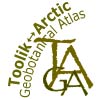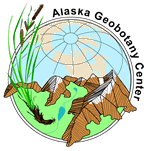Imnavait Creek Permanent Vegetation Plots
Permanent Vegetation Plots
Illustration by John Adams 1991©
Walker DA, Lederer ND, and Walker MD. 1987. Permanent vegetation plots: Site factors, soil physical and chemical properties and plant species cover. Department of Energy R4D Program, Institute of Arctic and Alpine Research, University of Colorado, Boulder, CO.
- R4D Program Data Report (Data Report: PDF, 3.4 MB)
- Introduction
- Site Factors
- Soils
- Vegetation
- Acknowledgements
- References
- Figures
- Tables
- Table 1. List of vegetation communities and microsites sampled in 1984 and 1985 - PDF - MS Word
- Table 2. Summary of areas sampled in 1984 and 1985 - PDF - MS Word
- Table 3. Legend for the environmental variables used in the R4D vegetation studies - PDF - MS Word
- Table 4. Environmental variables for the R4D permanent vegetation plots - PDF - MS Excel
- Table 5. Soil descriptions for representative vegetation communities - PDF - MS Word
- Table 6. Soil physical characteristics for the R4D permanent vegetation plots - PDF - MS Excel
- Table 7. Soil chemical characteristics for the R4D permanent vegetation plots - PDF - MS Excel
- Table 8. R4D permanent study plot vegetation data, species cover (percent), sorted by growth form - PDF - MS Excel
- Appendices
- Appendix 1. Plot and soil photos - PDF
- Appendix 2. Sorted table for R4D permanent study plot (online version not available)
- Appendix 3. Approximate equivalent vegetation units in several northern Alaska and northwestern Canadian studies - PDF - MS Excel
- Appendix 4. Permanent vegetation plot locations - PDF (Plot location map)
- (see Tables 1, 2, 4, 5, 6, 7, and 8 for links to individual plots; plant species name links to a descriptive webpage with photos)
Introduction
Figure 1. Vegetation plot layout. The plot is a 5-meter circle. Note the 1 m2 photo plot. The scale rod in the center of the plot shows 1-foot intervals.
Select image to enlarge.
This data report is a summary of environmental, soil, and vegetation information collected from 73 study plots at the R4D research site near Toolik Lake, Alaska (Appendix 4, plot location map). It brings together for easy reference all the available plot data and supercedes earlier data reports (Walker et al. 1985). This information is being used in the classification and mapping of the vegetation and the analysis of the environmental controls (Walker et al. 1987). It provides useful input to several phases of the R4D research including the landscape ecology, slope modeling, and the primary productivity studies.
Plot Locations
The field sampling was conducted during the periods of August 1-10, 1984 and August 17-September 4, 1985. During the same periods, field surveys were conducted for geobotanical mapping (Walker et al. 1987). Sixty-seven of the plots were permanently marked as indicated below. Plots SW-67 through SW-71 were sampled during the mapping transects and were remote from the intensive study site, and, therefore, were not permanently marked.
The sampling was done in representative examples of the major vegetation community types, particularly of the area within the main R4D watershed. Appendix 4, plot location map, shows the location of the permanent study plots. Table 1 is a summary of the plant communities and the microsites that were samples, and Table 2 lists the major microsite categories and the sample plots in each category.
Plot Size
Circular (5 m diameter) vegetation plots were placed in areas of homogeneous vegetation. The 19.6 m2 plots were within the 10-50 m2 minimal area recommended for heathland samples and somewhat smaller than the 50-100 m2 recommended for scrub communities (Westhoff and van der Maarel 1978). In areas where the homogeneous vegetation was insufficient for a plot of this shape (e.g. narrow water tracks), the plot was shaped to accommodate homogeneous vegetation of equal area. In areas where there was a tight mosaic of vegetation types, such as in frost scars or in areas of strangmoor, the plot was sampled in two parts representing the included microsites, and an estimate was made of the area covered by each microsite (the total adding to 100%).
Plot Markings
Each plot was marked with a 1.3 m high wooden lathe in the center of the plot and three short stakes on the perimeter of the plot. An aluminum identification tag was attached to the center stake (Figure 1). Each plot was photographed at the time of sampling. Photos of the plots and soils are in Appendix 1.
Photo Plot
Within each permanent plot, a smaller 1-m2 photo-plot was marked for periodic close-up photos to record long-term changes due to mortality, recruitment, disturbance, or climate changes. This plot was marked with four wire flags and string around the perimeter of the plot (Figure 1).
Site Factors
The site of each plot was described according to the variables listed in Table 3 plus measurements of thaw depth (at time of vegetation sampling), snow depth (May 16-17, 1986), and estimates of cover of bare soil, rocks, and the major plant growth forms. Table 4 summarizes these data. (Note: some plots have subplot designations. For example plot SW-4 had two microsites, SW-4A and SW-4B.)
Field Sampling
Soil pits were dug adjacent to the plots and described and classified according to the U.S. soil taxonomy (Soil Survey Staff 1975). Soil samples were collected from each horizon and air dried in the laboratory. Soil moisture and bulk density samples were collected from each plot on August 28, 1985, following an extended period of dry weather.
Laboratory Analysis
Laboratory analyses were conducted at INSTAAR (Institute of Arctic and Alpine Research) on soils from 10-cm depth (rhizosphere) for all plots. Several plots (SW-2, 6, 8, 11, 16, 19, 22a, 24, 32, 33, and 42) were selected as typical of the common community types. Soil descriptions for these plots are in Table 5 (PDF, 122 KB), and soil analyses were run on all horizons below the Oi horizon.
Physical properties
Bulk density samples were taken from the sides of the soil pits or from large soil plugs (for very wet soils) using the core method (Blake and Hartge 1986). Bulk density was calculated as the weight of the oven-dried (105°C) sample divided by the volume of the sample. Weight of gravel was not subtracted from the sample. Organic matter was determined by the Walkley-Black procedure (Nelson and Sommers 1982), with results reported as percentage total organic matter. Particle size samples were treated with H2O2 to remove organic matter. Silt and clay were separated using the pipette method (Gee and Bauder 1986). The physical properties are reported in Table 6.
Chemical properties
Soil pH was measured using the water-saturation percentage preparation (saturated paste) method of Jackson (1958). The pH was measured using a Chemtrix Type 400 pH meter.
Cations (Ca, Mg, and K) were extracted using the ammonium acetate method (Thomas 1982). Approximately 2 g of soil were used for the organic horizons and 5 g for the mineral horizons. The filtrate was analyzed using a Perkin-Elmer Atomic Absorption Spectrophotometer Model No. 2280.
NO3 was extracted with KCl (Keeney and Nelson 1982). A 10 millimole KCl solution was used instead of the 2N solution of the method because potassium of the 2N KCl solution swamped the ion exchange column on the Dionex 2010i Ion Chromatograph (see Dick and Tabatabai 1979 and Eubanks and Joyce 1985). Chemical properties are reported in Table 7.
Vegetation
Field Methods and Raw Species Data
Percentage cover of all plant taxa was visually estimated. For plots with more than one microsite, percentage cover of species was estimated separately for each microsite within the plot. Voucher collections were made for all vascular plants, bryophytes, and lichens occurring in the plot. These were verified by Dr. Dave Murray, University of Alaska Herbarium (AKA what's AKA?). Table 8 contains the raw species data for the 73 plots.
Sorted Species Table
Appendix 2 (online version unavailable) is a sorted table that groups the plots into community types. Characteristic and associated species are grouped together for each community type following the table analysis techniques of the Braun-Blanquet approach (Mueller-Dombois and Ellenberg 1974). The species were ordered using the following set of rules regarding their fidelity to a given community type: characteristic species were those that occurred in more than 50% of a given group and less than 33% of the remaining plots; associated species were those that either occurred in more than 40% of a given group and less than 25% of the remaining plots or where more than 50% of the total occurrences were within the given group. The final ordering of the table was accomplished using an iterative manual sorting procedure and a FORTRAN program LISTEML written by Margaret Eccles at INSTAAR. A total of 12 iterations were used to produce the final synthesis table.
Acknowledgements
Mike Figgs and Dave Kallenbach were much appreciated field assistants. Rolf Kihl, INSTAAR Sedimentology Laboratory, provided guidance and help during the soils analysis. Jennifer Caine, Environmental Chemistry Laboratory, INSTAAR Mountain Research Station performed the cation and nitrate analyses. Paul West and Heidi Weitz assisted with the soil preparations. Numerous people were consulted during the soils analysis including Dr. Iggy Litaor, INSTAAR research associate; Dr. Kaye Everett, The Ohio State University; and Giles Marion, Systems Ecology Research Group, San Diego State University. Dr. Dave Murray and Dr. Barbara Murray provided expertise and assistance with the plant identifications.
References
-
Error 1129: Host 'grotto.geobotany.uaf.edu' is blocked because of many connection errors; unblock with 'mysqladmin flush-hosts'

